Session Data
- Date: 23/07/2025
- Time: 18:58 – 23.12 UT
- Seeing: II. Good – Slight
- Transparency: II. Clear with some cloud
- Temp: 10 C,
- Air Pressure: 1029mb
- Humidity: 84%
- Dew Point: 7C
- Wind Speed: 2mph
- Average SQM: magn/arcsec^2
Scope: TMB 80 f/6 Camera: ZWO ASI 183MM. Darks but no Flats for HCG92.
Scope: Altair 250mm R.C f/5.3 Camera: ZWO ASI 183MM. Darks but no Flats for all other observations.
All images are displayed North up and East to the left.
HCG92

HCG92 is located 4.0 degrees NW of Eta Peg in Pegasus
Thought I would try the TMB for this observation of Stephan’s Quintet just for a comparison to the one made with the 250mm RC at f/5.3 made in November of 2024.
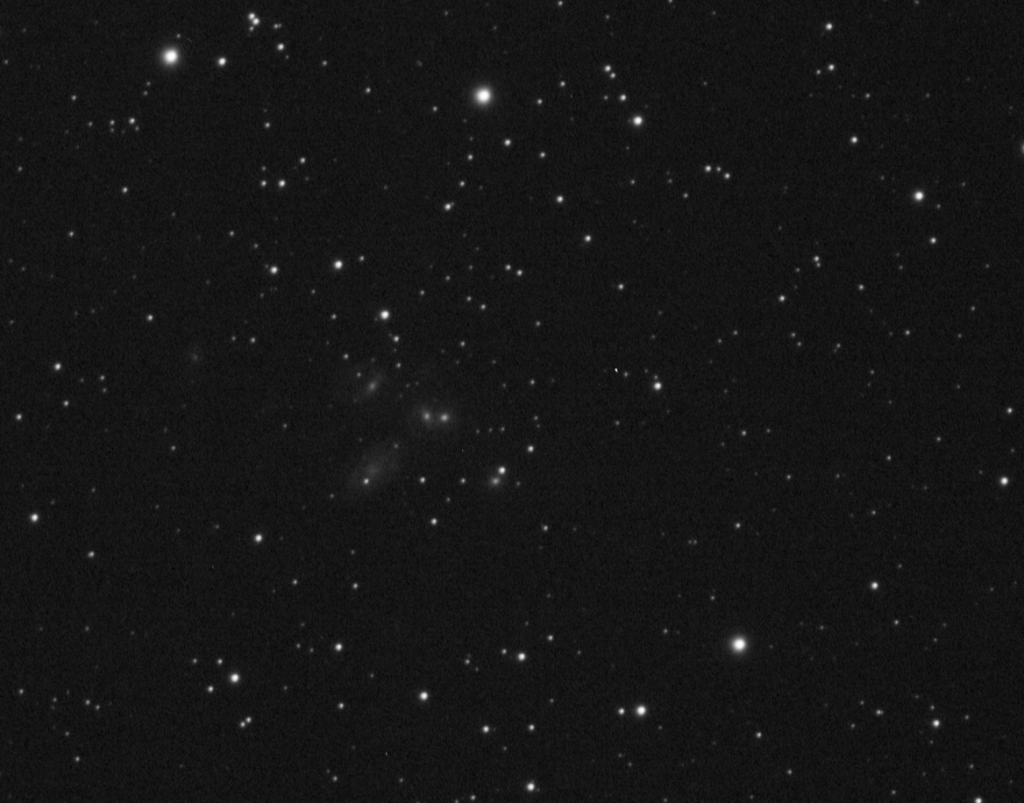
I’ve selected a 100% crop above. Comparing this with the larger scope, it’s quite remarkable how well this little scope performs. While the structure of the spiral arms of NGC7319 is barely visible, the basic shapes of the inner parts of each galaxy are well defined enough.
What I didn’t get with the narrower FOV of the larger scope was NGC7343 to the East and the Little and large galaxies of NGC7340 and NGC7331 at the Northeastern edge of the frame.
Total Integration Time: 375 sec
HCG93
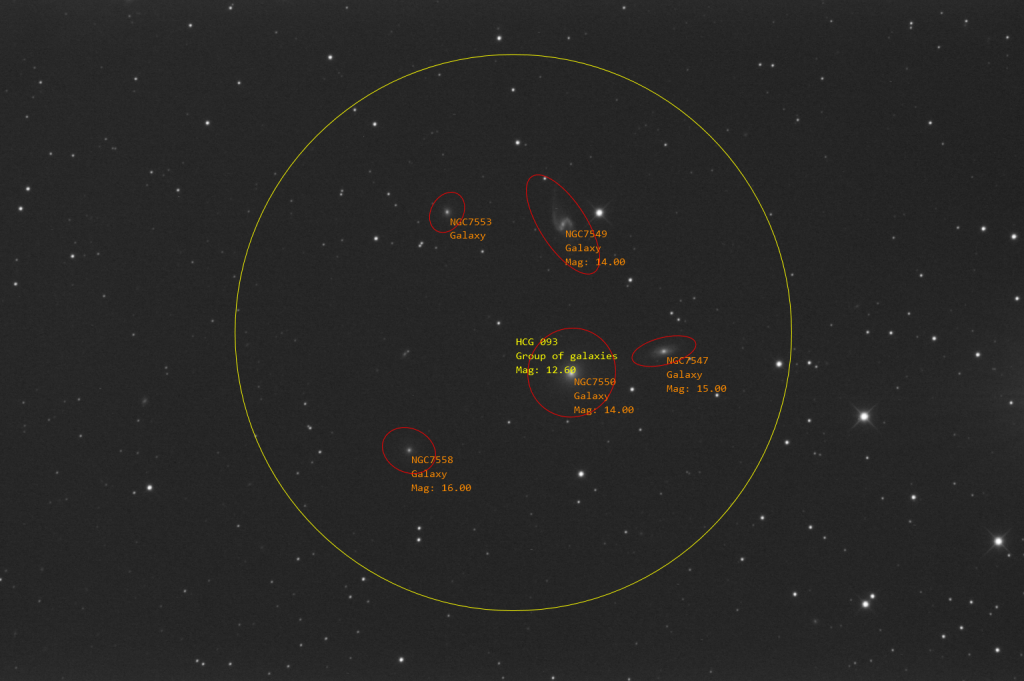
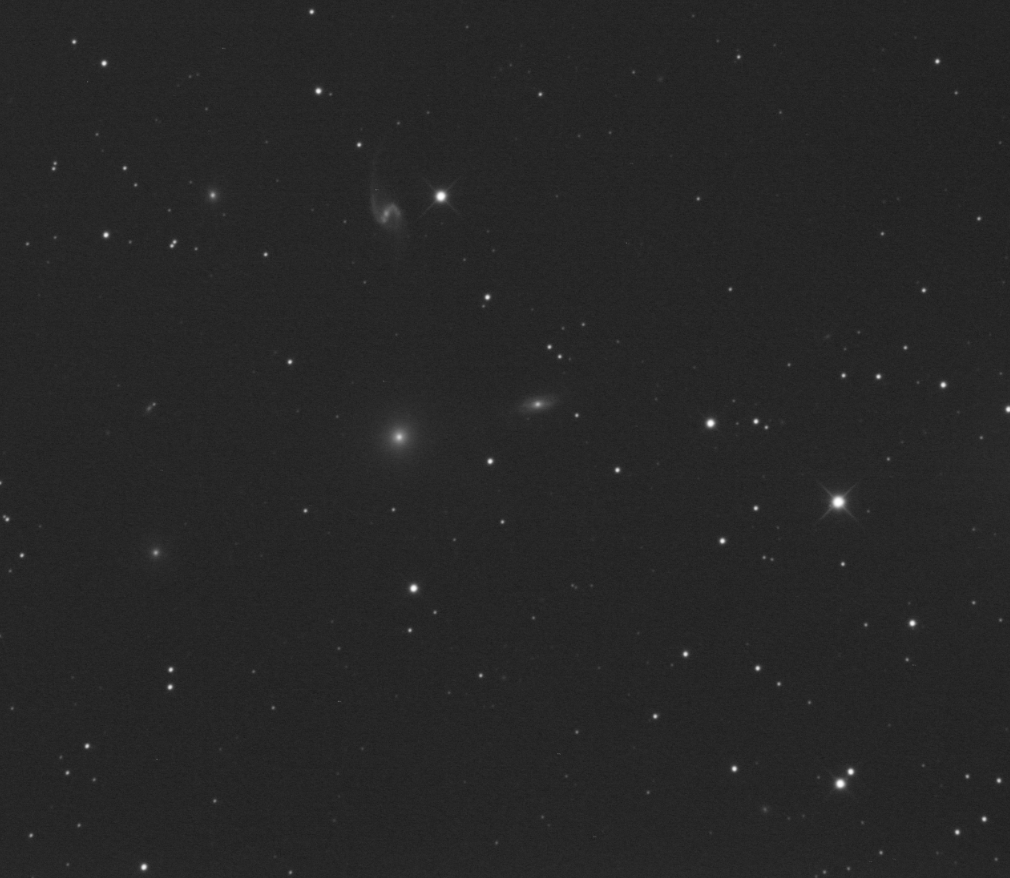
HCG93 is located 4.3 degree North East of Alpha Peg in Pegasus
Hickson 93 consists of 5 galaxies. Starting at the Northeast is NGC7553 a 15.7 mag elliptical. I see a bright core and a very faint outer halo and measuring no more than about 20 arc sec in diameter.
West of this is the showpiece NGC7549. This Sbc is orientated North/South and its two arms look highly perturbed. The Northern arm is the more prominent. My image maks it look like it has two bright cores, but when you look at say the PanSTARRS DR1 colour images, so can see what looks like a dust lane obscuring what would be the bar of the galaxy. It’s nice to see typos in scientific papers as Hickson lists this as NGC7594 🙂
Southwest of this is NGC7547, a 14.9 mag SBa galaxy. we are looking at it from an angle and I just see a hint of spiral structure radiating out East and Westwards.
To the East of this is NGC7550, a 13.9 mag E4 type elliptical. Consisting of a bright core with a fainter inner halo, that fades out even further as it diffuses into the background sky.
To the East of this, is the final object of the five NGC7558. A 16.0 mag, SO type elliptical. I see the bright core and just the edge of the outer halo.
Total Integration Time: 450 sec
HCG94
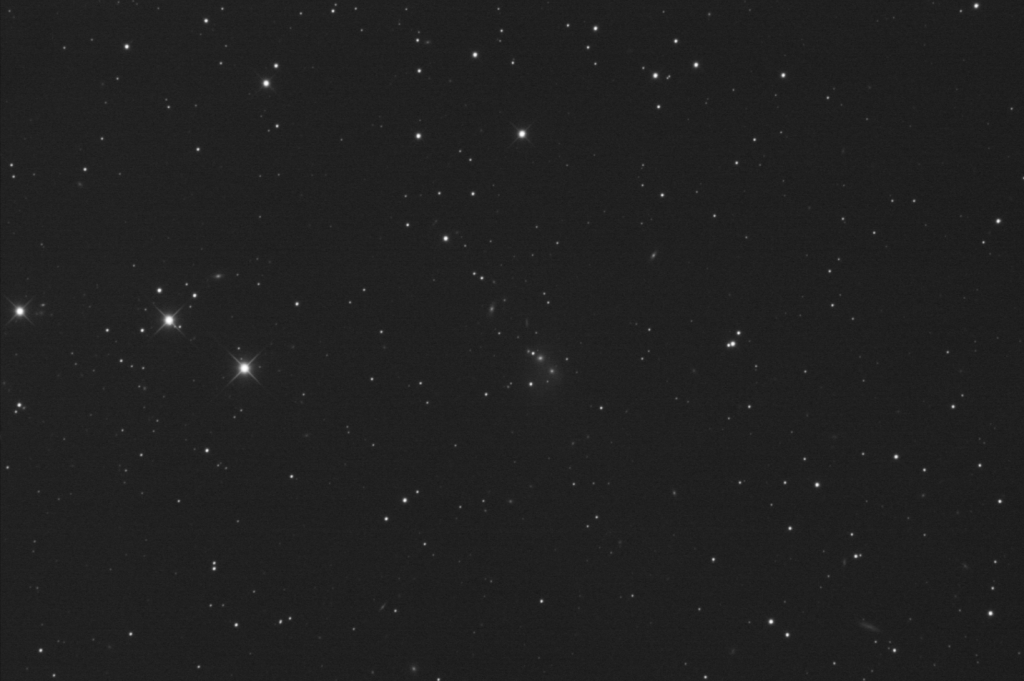
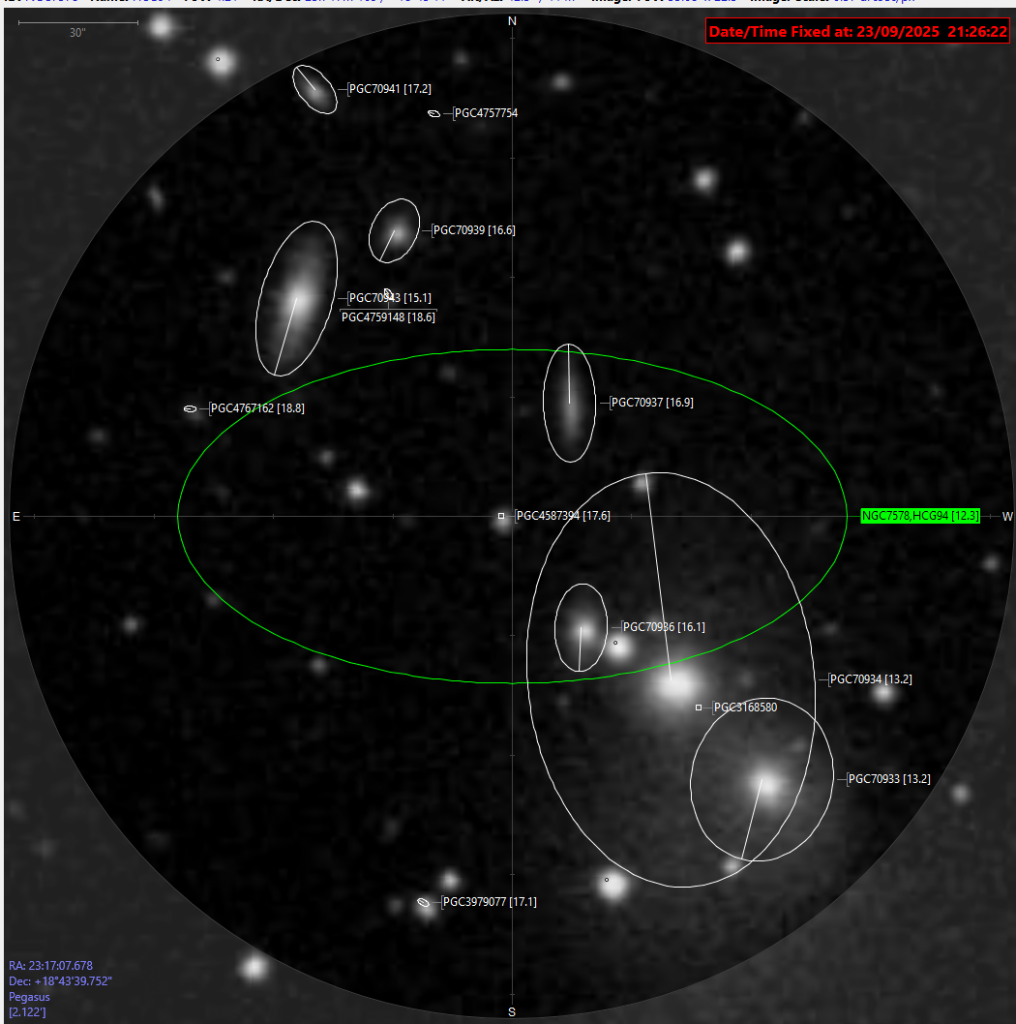
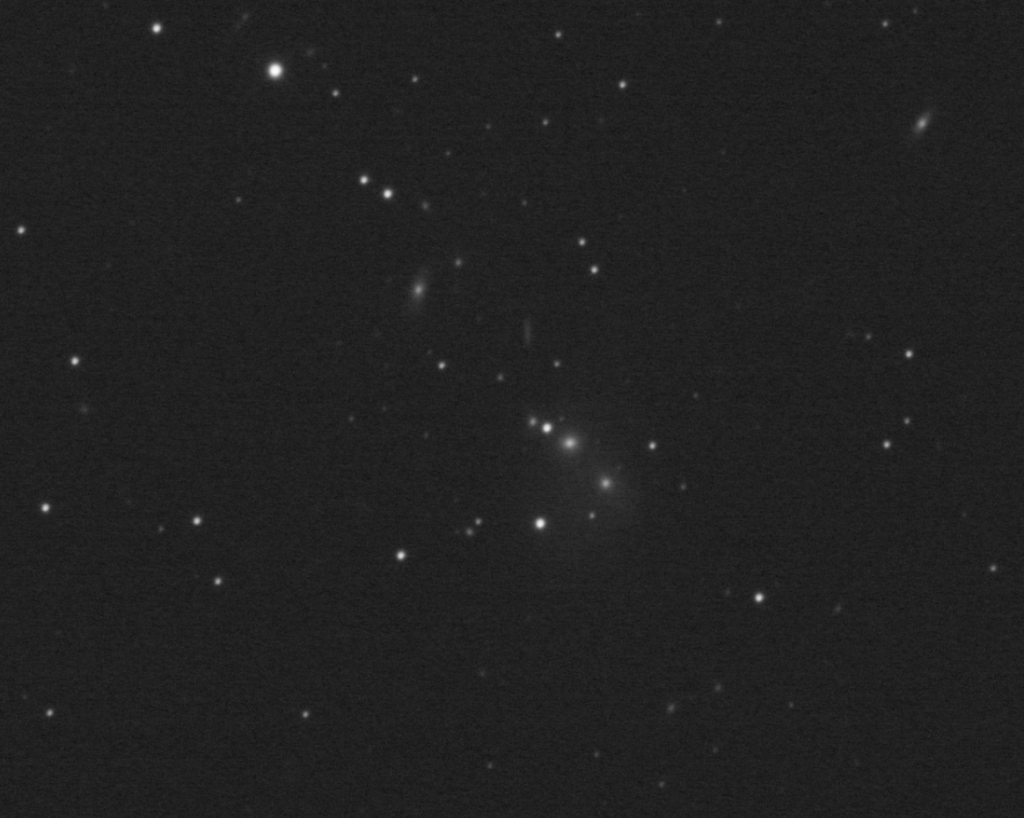
Located 4.5 degrees Northeast of Alpha Peg in Pegasus
HCG94 is a group of 7 galaxies.
Starting at the North is PGC70941 an 18.4 mag Lenticular, No features can be made out.
The same can be said for PGC70939 to the Southwest. To the Southeast of this is PGC70943 an SOa type galaxy and here we can see some structure aligned Northwest/Southeast.
Southwest of this is PGC70937 which is a very edge on type Sc galaxy orientated North/South.
South of this is PCG70936 an E-SO lenticular which is almost as bright as the core of PGC70934 , whos outer halo it is embedded in. Having said that, this large outer halo does not extend this far in my observation.
he last of the group is our only NGC object, NGC7578, a SO Lenticular galaxy.
In the full frame FOV I can also make out the galaxies NGC7588, PGC70894 and PGC3978712
Total Integration Time: 375 sec
HCG96
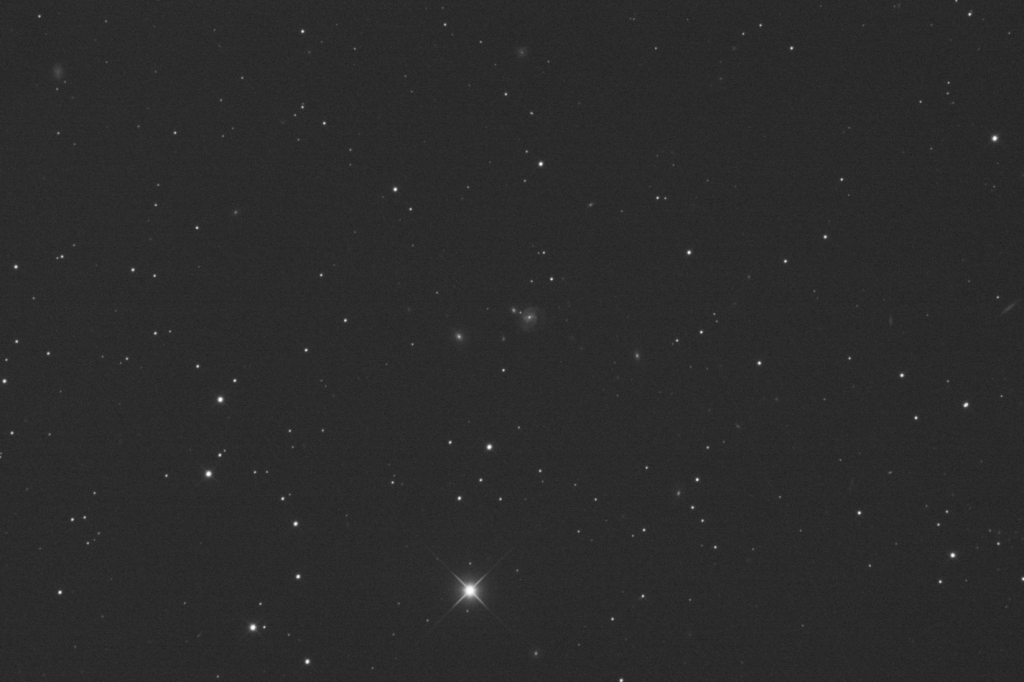
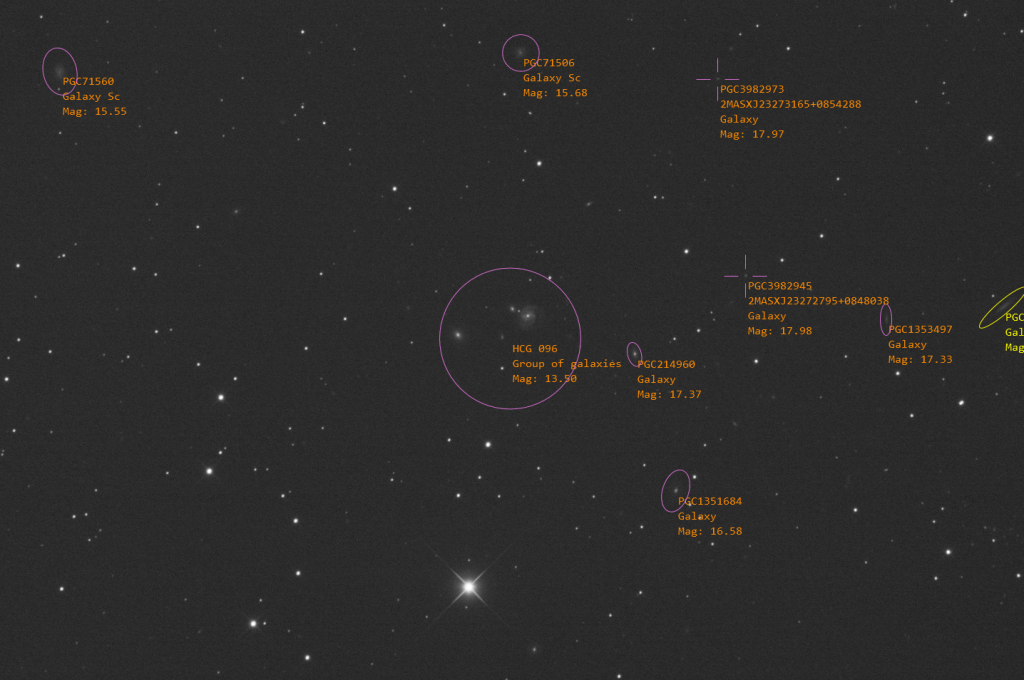
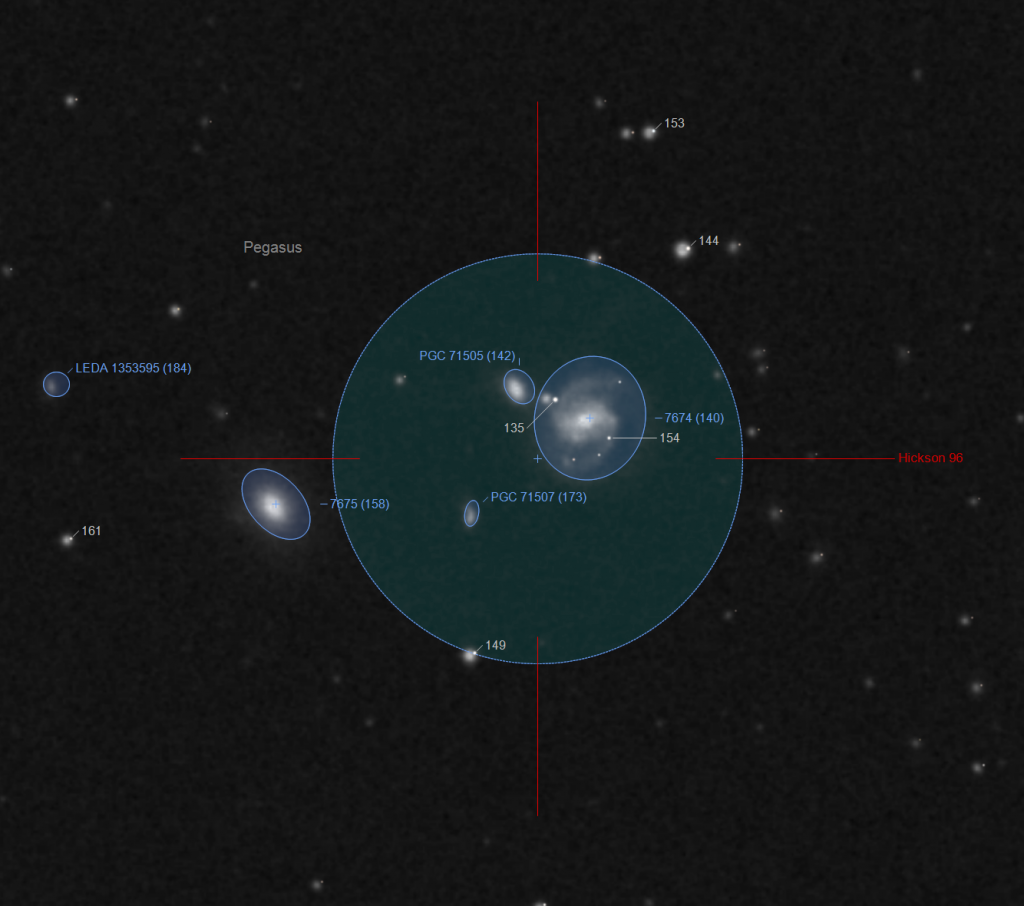

HCG96 is located 2.3 degrees due North of Theta Psc in Pisces
It consists of four galaxies starting North and working Clockwise being PGC71505, NGC7674, PGC71507 and NGC7675. The largest and most interesting is NGC7674, a 14.0 mag SBbc spiral which is face onto us. The arms look to be rotating in and anti-clockwise direction and appears to be very symmetrical. The Northern arms tail looks a lot longer in the image and disappears when it gets just South of West. The core is bright and round. It has a companion galaxy PGC71505.
To the Southeast of these is the irregular 17.3 mag galaxy with a North/South orientation and to the East of that the SO elliptical galaxy NGC7575 which has a bright core and a fading halo orientated Northeast/Southwest.
Other objects in the full FOV are PGC71461 on the Western edge, PGC71506 to the North and PGC71560 at the Northeastern corner.
Total Integration Time: 375 sec
HCG85


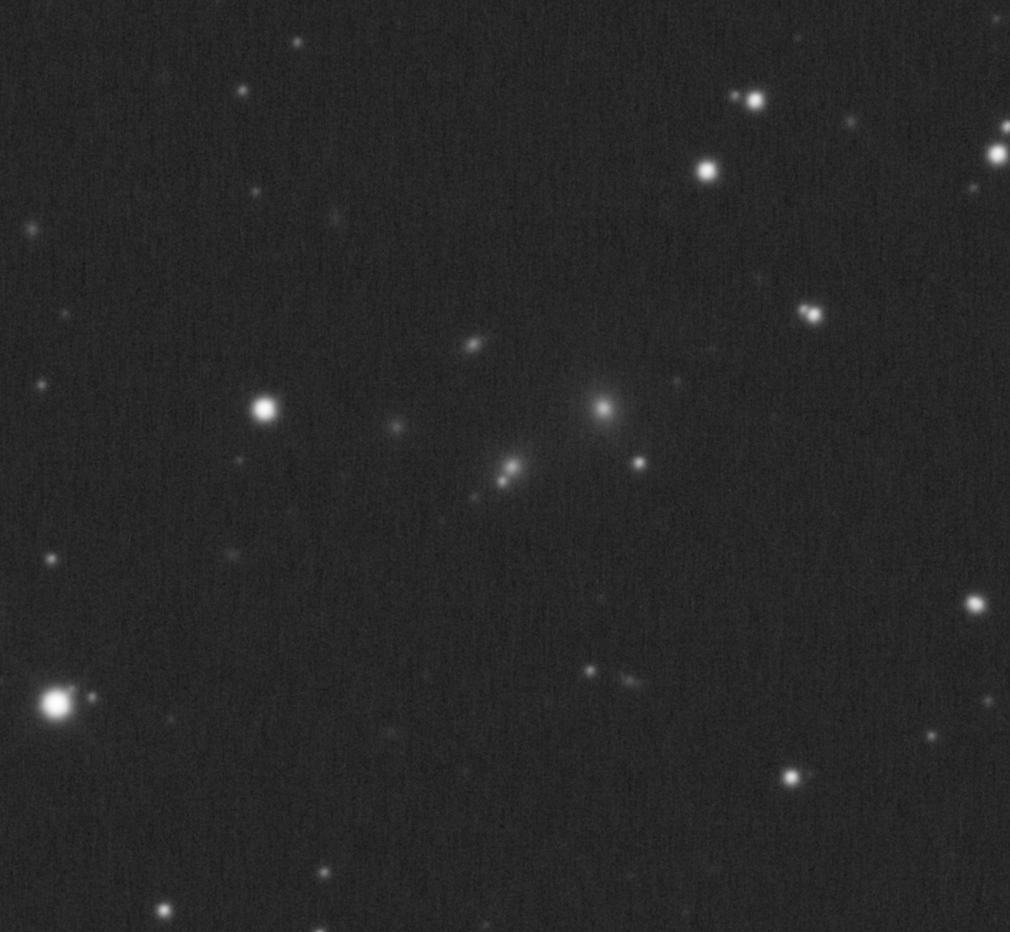
Located nearly 2.0 degrees West of Tau Dra in Draco
HCG85 consists of four galaxies – PGC62478, PGC62476, PGC62477, PGC62484 all ellipticals, although PGC62478 at 100% looks to have a Northwest/Southeast bias of the outer halo. This was confirmed with the PGC size data when overlaid on the image afterwards.
There are quite a few other galaxies in the full frame FOV, the most noticeable of which is PGC62518 to the Southeastern edge of the frame and PGC2754094 6 arc min to the West of this.
Total Integration Time: 450 sec
HCG88
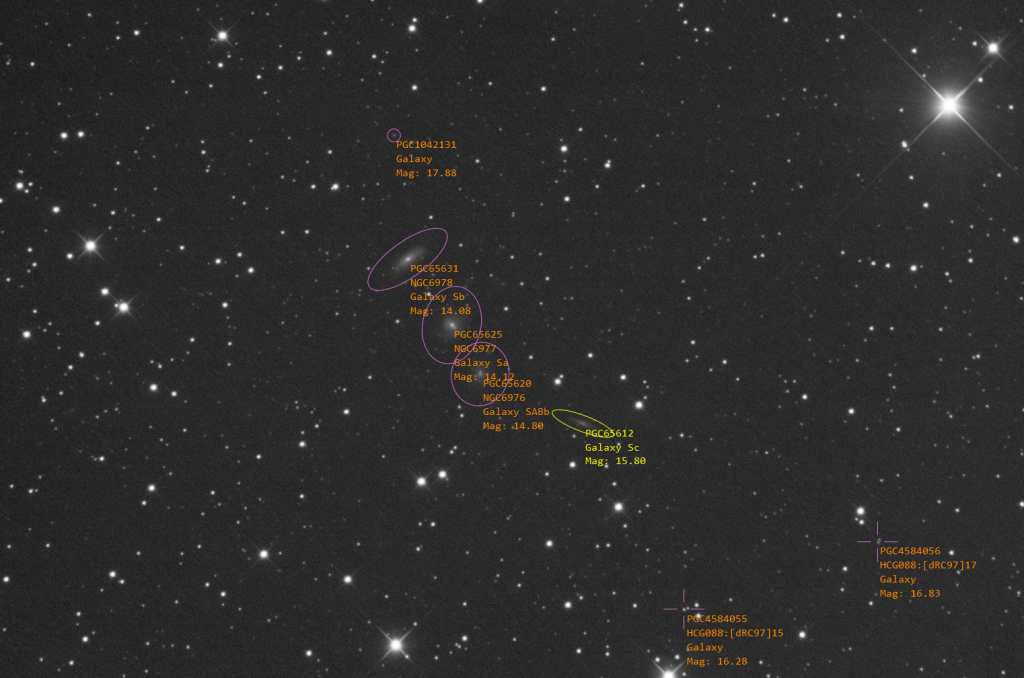
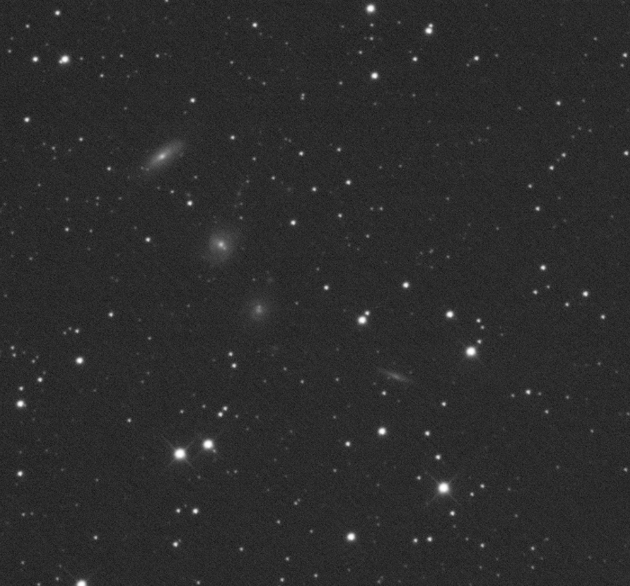
Located 1.3 degrees Southeast of EN Aqr in Aquarius.
Hickson 88 consists of four galaxies. Starting from the Northeast we have NGC6978 a 14.1 mag Sb class spiral. The core is bright and the faint inner halo is orientated at PA 126 degrees.
To the the Southwest of this is NGC6977 , a 14.1 mag S class spiral which appears to be almost face onto the observer. The core is bright, but diffuse. My image shows what looks like to be a spiral arm to the South that curves towards the East by about 35 arc sec.
Within the inner halo to the Southwest is a star-like object located at RA 20 52 29.392 DEC -05 44 51.36. Nothing stellar shows up in Astroplanner or Skytools putting the coordinates into Portal suggests a Gngc6975aia object. Firing up carte du Ciel and loading up the Gaia DR3 database, confirms that this is Gaia DR3 6913281270627867392, a 17.9 mag star 4083 ly away.
To the the Southwest of this is NGC6976 a 14.8 mag SABb class spiral. The core here is faint and elongated slightly in and east/West orientation.
To the the Southwest of this is NGC6975, a 15.8 mag Sc class spiral that is almost edge on. The core bulge is faint and elongated along the outer halos axis of PA 67 degrees.
Total Integration Time: 660 sec.